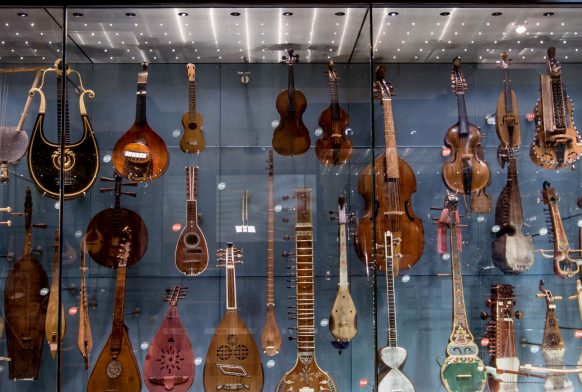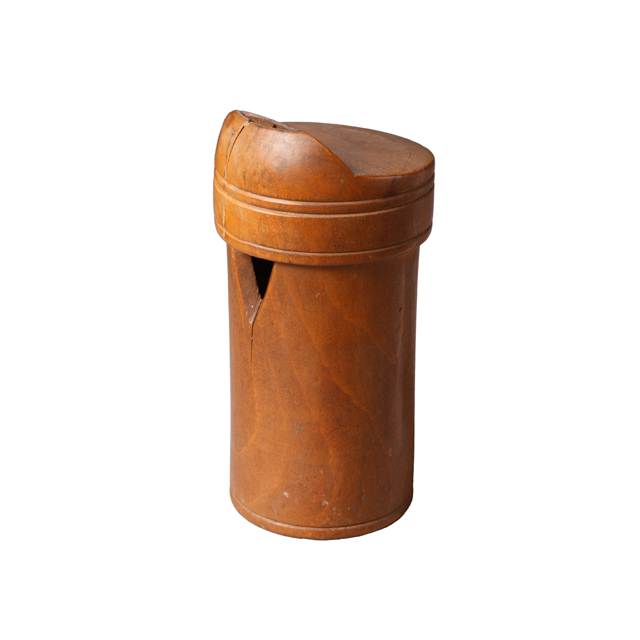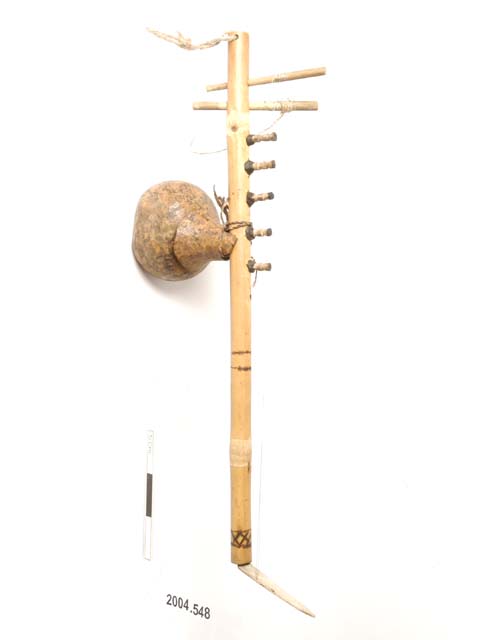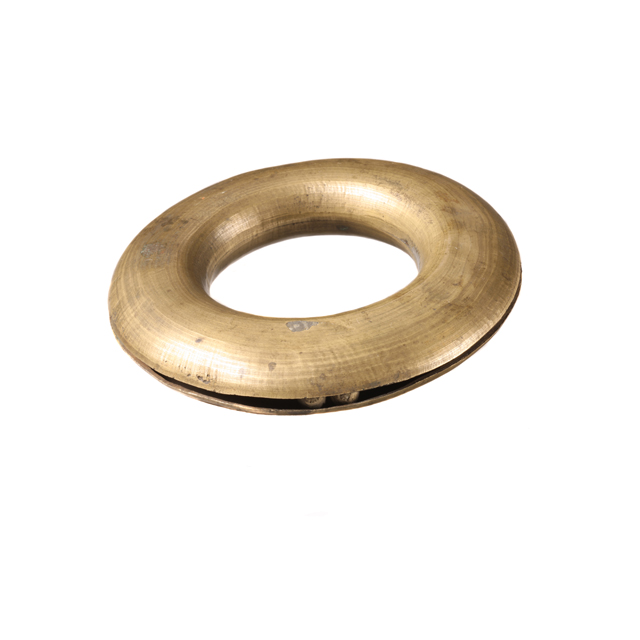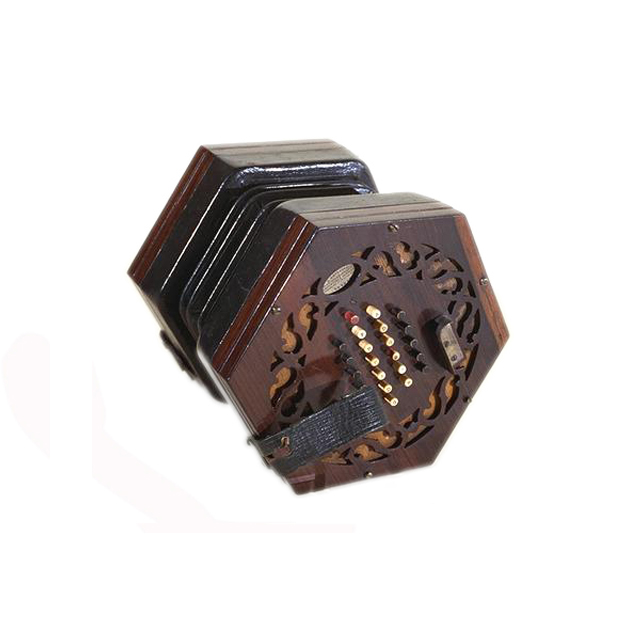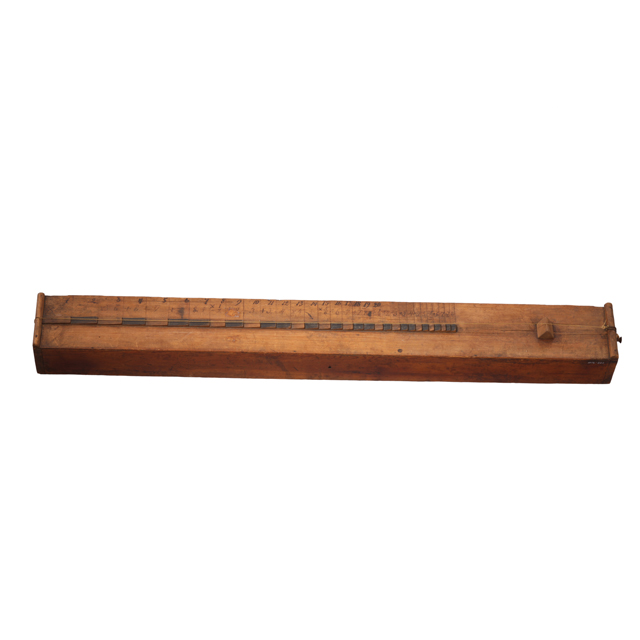
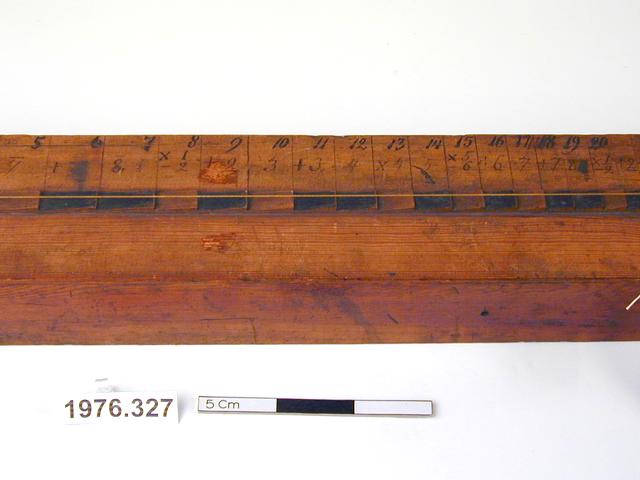
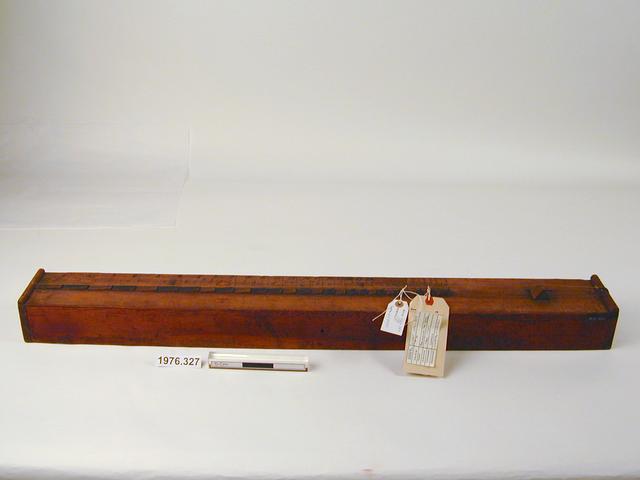
Psalmodikon, bowed zither. Rectangular pine box, open at the base, with five regularly spaced bars beneath the soundboard. A block of wood is fixed to the interior of the centre of the long side of the box facing the player, and is drilled with a small hole. A rectangular length of wood carved with 31 overlapping rectangular frets is fixed to the soundboard. 18 black black frets indicate natural notes, white frets indicate accidentals, with a total compass of three octaves. The single string was once secured by a wooden peg at the bass end; the end of the broken peg is fixed within the peg hole. The opposite end of the string is tied around a loop of wire attached to a screw projecting from the short sided of the treble end of the box. oal 1035, oaw 123
The psalmodikon originated in Scandinavia in the early nineteenth century. It was used for guiding the choir in church services where an organ was not available. The board is fretted and the names of the notes mark the frets, making it simple to play.



